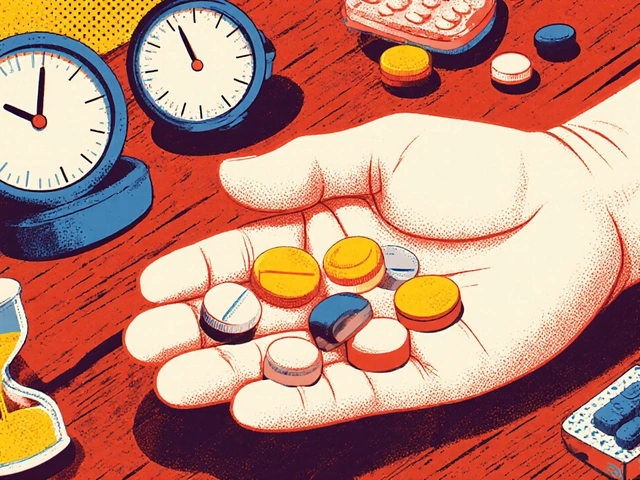Anticoagulant Guide – How Blood Thinners Work, Safety Tips & Affordable Options
If you’ve been told to take a blood thinner, you probably have questions. What does a medication called an anticoagulant actually do? Is it safe? And can you get it without breaking the bank? This guide gives you straight‑forward answers and practical tips you can use right now.
Common Anticoagulant Medications
There are two main groups of blood thinners you’ll see on prescriptions. The first is warfarin, a long‑standing pill that needs regular blood tests to keep the dose right. The second group includes the newer direct oral anticoagulants (DOACs) like apixaban, rivaroxaban, dabigatran and edoxaban. DOACs are easier because they don’t need frequent lab visits, but they can be pricier.
Other anticoagulants you might hear about are injectable drugs such as heparin and low‑molecular‑weight heparin (LMWH). Doctors often use these in hospitals or for short‑term treatment after surgery. Knowing which type you’re on helps you understand dosing, monitoring and potential interactions.
Saving Money on Your Blood Thinner
Cost is a big worry for many patients. The first step is to check if your medication is covered by government programs or private insurance. In Australia, for example, the PBS (Pharmaceutical Benefits Scheme) can cut the price of many anticoagulants dramatically.
If you’re buying online, stick to reputable pharmacies that require a valid prescription. Look for sites that list their accreditation, price‑matching policies, and clear return procedures. Avoid “too good to be true” offers – they often turn out to be fake or unsafe.
Another tip is to compare the brand version with its generic counterpart. Generic apixaban or rivaroxaban can be 30‑50% cheaper while delivering the same effect. Ask your doctor or pharmacist if a switch is appropriate for you.
Finally, consider bulk ordering if you have a stable dose and a long‑term prescription. Some online pharmacies offer a discount when you buy a three‑month supply at once.
Remember, never adjust the dose yourself to save money. Blood thinners need the exact amount prescribed, otherwise you risk dangerous clotting or bleeding.
Bottom line: understand which anticoagulant you’re on, keep an eye on lab results if you use warfarin, and shop smart for affordable options. With the right info, you can stay safe and keep your wallet happy.

Coumadin: Critical Facts About Warfarin, Dosage, Diet, and Management
Curious about Coumadin and how it affects daily life? This detailed guide explains how warfarin works, who needs it, key facts about monitoring, and practical lifestyle tips. You’ll find out what makes Coumadin both life-saving and tricky to manage, plus how Aussies in 2025 are navigating its challenges. Get real advice from the ground up—straight from Brisbane, with helpful tables and clear, human talk.




